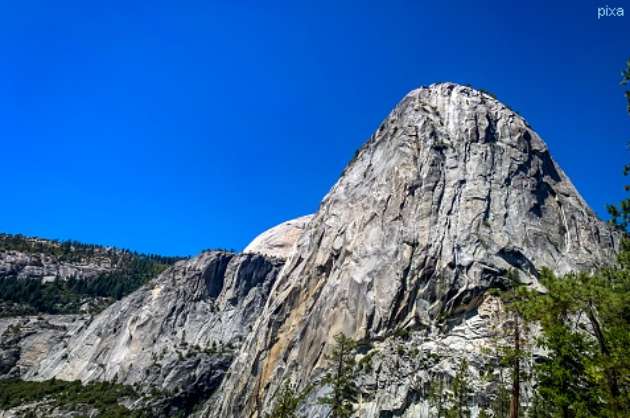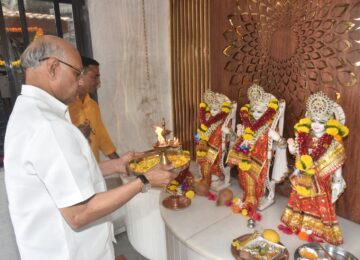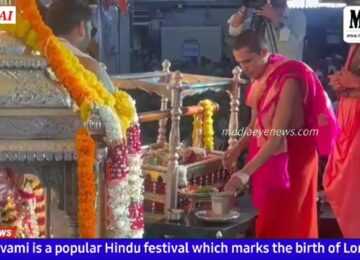Anupama Nair
www.mediaeyenews.com
India has one of the oldest civilizations in the world. In a time when we are forgetting our heritage and culture, I am making a humble effort to make everyone proud of our country and Bharat Ma. The major ancient civilizations of the world were Indus Valley Civilization (3300 BC–1900 BC), Greek (2700 BC–479 BC), Roman (550 BC–465 AD), Egyptian (3150 BC– 332 BC), Mesopotamian (3500 BC–500 BC), Mayan (2600 BC–900 AD) among a few.
The Indus Valley Civilization (IVC) was a Bronze Age Civilization in the northwestern regions of Indian Subcontinent located in Afghanistan, Pakistan and Western and Northwestern India. It existed from 3300 BC to 1300 BC, and in its mature form from 2600 BC to 1900 BC. Along with Egyptian and Mesopotamian civilizations, it was one of three early civilizations of the Asian continent. It flourished in the basins of the Sindhu River (Indus), which flows through Pakistan, and India is perennial, mostly glacier-fed, rivers that once coursed in the vicinity of the seasonal Ghagar-Hakra river northwestern India and eastern Pakistan.
It is to be noted that this is the only urban civilization while the rest of the above-mentioned civilizations were rural. The civilization's cities were noted for their urban planning, baked bricks houses, elaborate drainage systems, water supply systems, clusters of large non-residential buildings, and new techniques in handicraft (seal carving) and metallurgy (copper, bronze, lead, and tin). The large cities of Mohenjo-Daro (Sind) and Harappa (Punjab) likely had a population of between 30,000 and 60,000 and the civilization itself during its florescence may have contained between one and five million people.
The Indus civilization is also known as the Harappan Civilization, after one of the sites, Harappa which was the first of the sites to be excavated in the 1920s while trying to lay a railway line. The discovery of Harappa and soon afterwards Mohenjo-Daro was the culmination of work beginning in 1861 with the founding of the Archaeological Survey of India during the colonial rule. There were however earlier and later cultures often called Early Harappan and Late Harappan in the same area.
By 2002, over 1000 Mature Harappan cities and settlements had been reported, of which just under a hundred had been excavated. There are only five major urban sites: Harappa, Mohenjo-Daro, Dholavira, Ganeriwala, and Lothal. The Indus civilization was roughly contemporary with the other civilizations of the ancient world. The Indus Valley Civilization extended from Pakistan's Baluchistan in the west to India's western Uttar Pradesh in the east, from northeastern Afghanistan in the north to India's Gujarat and Maharashtra in the south. The largest number of sites are in Punjab, Haryana, Gujarat, Rajasthan, and Uttar Pradesh, in India, and Sindh, Punjab, and Baluchistan provinces in Pakistan. Coastal settlements extended from Suktagan Gor in Western Baluchistan to Lothal in Gujarat. The southernmost site of the Indus valley civilization is Daimabad in Maharashtra. Indus Valley sites have been found most often on rivers, but also on the ancient seacoast, for example, Balakot, and on islands, for example, Dholavira.
Bhagatrav was a site recently discovered belonging to the Indus Valley Civilization. Bhagatrav is located in Hansot taluka of Baruch in south Gujarat, near the coast and gives access to the rich
mines and forested hills of the valleys of the rivers Narmada and Tapti. The excavation was done by Archaeological Survey of India and IIT Gandhinagar, and the mission was led by Dr. S.R. Rao.
The team discovered many geological treasures having rich iron contents, stone beads, and glazed pottery. Dr Rao stated this site was similar to the port city of Lothal. A large part of the site was however, washed out by floods from the Kim River and the backwaters leaving behind only the peripheral areas for exploration today after nearly five thousand years. Bhagatrav is surrounded by water for eight months in a year. Bhagatrav has been credited as one of the southernmost settlements of Harrapan culture in the Subcontinent.
An archaeologist Mr. Bobade, discovered an Indus Valley site in Yawal in the Bhusawal district of Maharashtra. Similar to Bhagatrav, discovered pottery and artefacts, when the site was excavated. “It is a virgin site never discovered by any archaeologist before. The pottery pieces discovered here are mainly wheel-made wares, both plain (red-clay, with or without a fine slip) and painted (in red and black colors) as was common in the Harappan Civilization. The discoveries indicate that this particular region of north-Maharashtra was inhabited for an extended period, very long after Indus Valley Civilization faded away into the pages of history”, said Mr. Bobade.
Several discoveries conducted in Maharashtra in 1958, 1974, and 1978 in Daimabad and now in Yawal, the Harappan culture may have existed in the region of modern-day Maharashtra. It is surprising the potters wheel made of wood did not survive “the ravages of time”, but the fragments were found nearly 1000 KM away from “the heart of the Harappan Civilization”. Mr. Bobade said “it’s still a mystery as to how such a large geographical area exhibited a uniform pottery tradition in forms, paintings and pottery designs similar to Harappa”.
Recent examination of human skeletons from the sites of Indus Valley Civilization has established that the end of the Indus civilization saw an increase in inter-personal violence and in infectious diseases like leprosy and tuberculosis. Many historians believe the great civilization ended due to Aryan invasion, while others believe it was floods in the Indus, climate change and earthquakes. Whatever be the reason a great civilization came to end. If modern city planners in India and Pakistan had bothered to learn about the city planning skills of our ancestors, we would have had great cities, roads, and drainage systems etc. We need to have a pride in our heritage and culture as well.





























Nice article
New information.
Great article. I am not surprised Anu as you were walking encyclopaedia. Proud of you girl.
Nice one. For a walking encyclopedia like you Anu not surprised.
Good article Anu.
Good informative article. Please publish articles on history and culture
Please publish more articles on history and culture.
Proud to be an Indian in Sydney
New info about Indus Valley Civilization. Please publish more articles like this.
New info. I ve heard of Harappa and Mohenjadaro and Lothal. Keep up the good work Anupama and Media Eye. This is an eyeopener. Big fan of media eye
Anupama is excellent in research work. Thank you Media Eye for such information. I am hooked on your site.
I have heard of Harappa and Mohenjadaro and Lothal. These new sites are eyeopening.
Please publish on ancient civilizations.
Never knew about these places.
Never knew this. Thank you Anupama.
Never knew these sites. Please publish about ancient civilizations
Hope new such sites are discovered.
Hope new such sites are discovered.
Hope new such sites are discovered.
Great info. Great research done.
Great research work done.
Nice info. Liked the article.
Nice info. Liked the article.
Nice article. Loved it. Anupama has eye for research.
New sites may come up. Pity we cant see Harappa and Mohenjadaro.
When can we see Harappa and Mohenjadaro.
In our life will we see Harappa and Mohenjadaro.
Great Indus Valley Civilization.
More and more sites discovered.
Anupama has good eye for research
Excellent article and excellent research work done by Anupama.
Indus valley Pride of India.
Indus Valley Pride of India.
Indus Valley Civilization is the pride of India.
Indus Valley Civilization is the pride of India.
Great research
Great research
Great research work done.
Great research work done.
Hope more sites are escavated.
Hope we see more of such articles in the future.
Hope we see more of such articles in the future.
Hope we see more of such articles in the future.
Hope New sites are discovered.
More sites should be escavated
More sites should be escavated
Great article
Great article
Great article